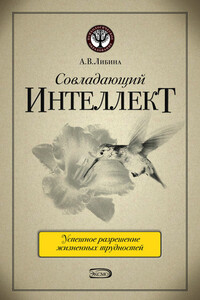Психографический тест: конструктивный рисунок человека из геометрических форм - страница 119
As an express-diagnostic method, TiGeR™ drawings are highly sensitive to occurrence of emotional changes triggered by internal, psychophysiological states, or external events such as difficult family or other interpersonal situations, posttraumatic symptoms or presence of psychopathology in its early development. As a therapeutic method, geometric constructive drawings reduce tension associated with any testing situations, and psychosocial or medical intervention. The complete test takes only 10 to 20 minutes to perform which also makes it very useful as the icebreaking technique during clinical sessions or a tune-in procedure during administration of a lengthy battery of assessments.
TiGeR™ Instruction
Drawing 1. Draw a human figure using only following geometrical shapes: triangles, squares, and circles:
You have to use 10 elements in total. Each of the geometrical shapes has to be used in your drawing at least once. You can change the size of the geometrical shapes as you wish. After completion of the first drawing, please, write below your drawing the following information: (1) full name, (2) age, (3) gender, and (4) date of the study.
Drawing 2. Draw a new picture of the human figure using the same geometrical shapes triangles, circles and squares using 10 elements in total, and without looking at the previous drawing or trying to recollect it. You have to use each geometrical shape at least once. You can change the size of the geometrical shapes as you wish.Please, proceed to the next drawing.
Drawing 3. Draw a new picture of the human figure using the same geometrical shapes using 10 elements in total, and without looking at the previous drawing. Please, proceed to the next drawing.
Drawing 4. Draw a new picture of the human figure using the same geometrical shapes – triangles, circles and squares. You may use as many elements for your fourth drawing as you wish. You have to use each geometrical shape at least once. You can change the size of the geometrical shapes as you wish. Please, proceed to the next drawing.
Drawing 5. This time draw only a human face using the same geometrical shapes – triangles, circles and squares. You have to use 10 elements in total.
You have to use each geometrical shape at least once. You can change the size of the geometrical shapes as you wish. Thank you.
Unique features of the Geometric Human Figures Drawing Test™ (TiGeR™)
The uniqueness of the TiGeR™ test task, procedure, and interpretation is based upon following design principles:
First of all, a constructive drawing of the human figure is based on the use of basic geometrical forms: a triangle, a circle and a square;
Secondly, the instruction incorporates the elements of the structured (e.g., limiting the drawing to 10 elements) and un-stractured (e.g., testee-defined number of elements) technique;
Thirdly, the interpretation is based on the interplay of three major approaches:
1. Projective analysis of unconscious individual preferences in the quantity of geometrical forms used to construct a
drawing;
2. Interpretation of a constructive Gestalt formed by the combination of the used geometrical forms (e.g., the Gestalt of 5-3-2: 5 triangles, 3 circles, and 2 squares characterizes different individual reality than 1-1-8:1 triangle, 1 circle, and 8 squares);
3. Idiographic analysis of the drawing elements, for instance, presence or absence of the essential body parts, distortion of elements, the size of the figure, and the use of the accessories.


